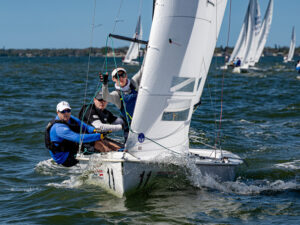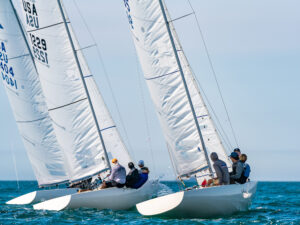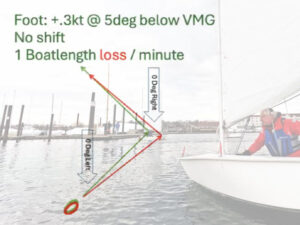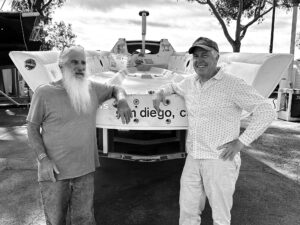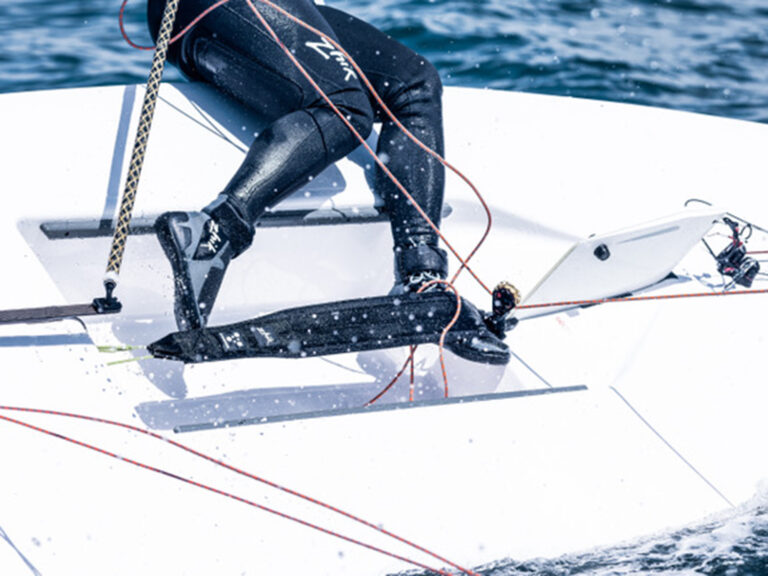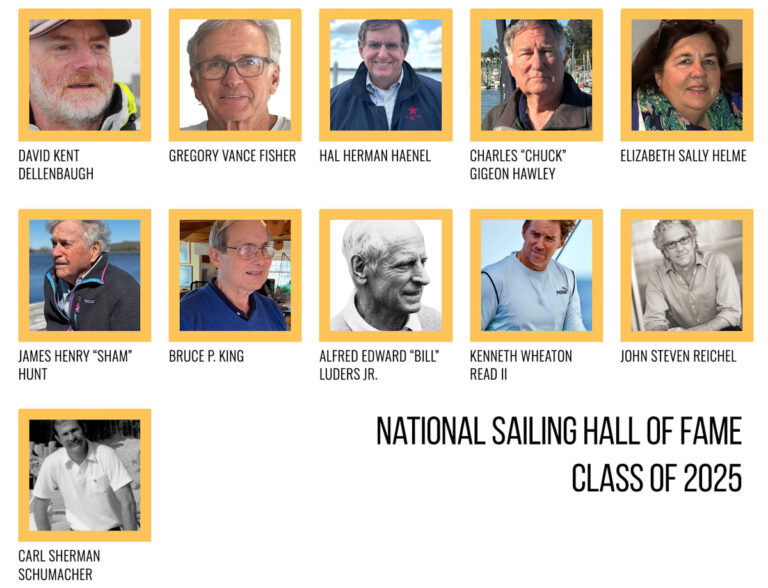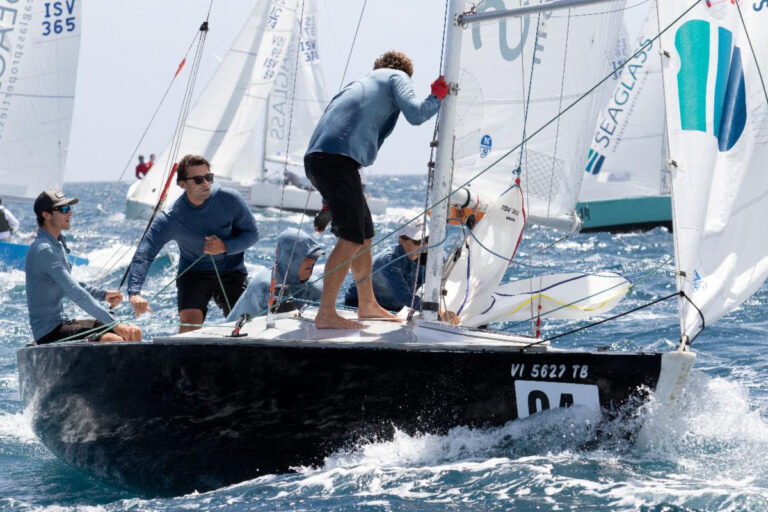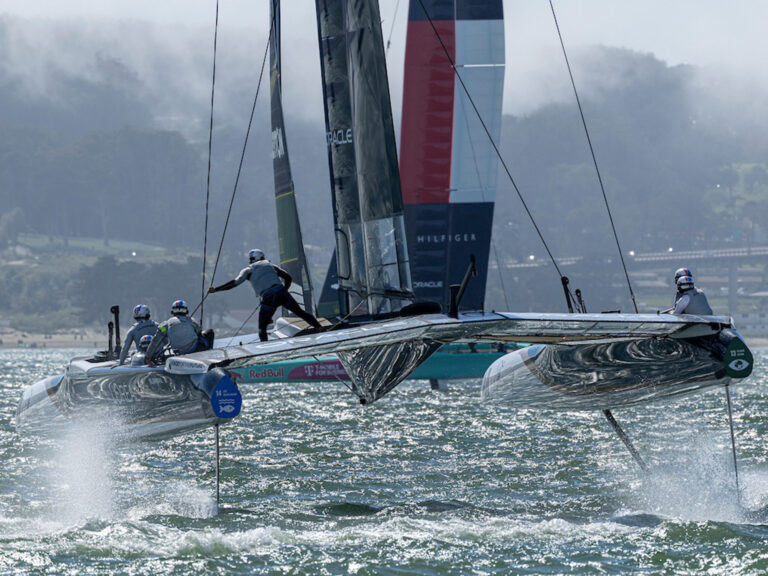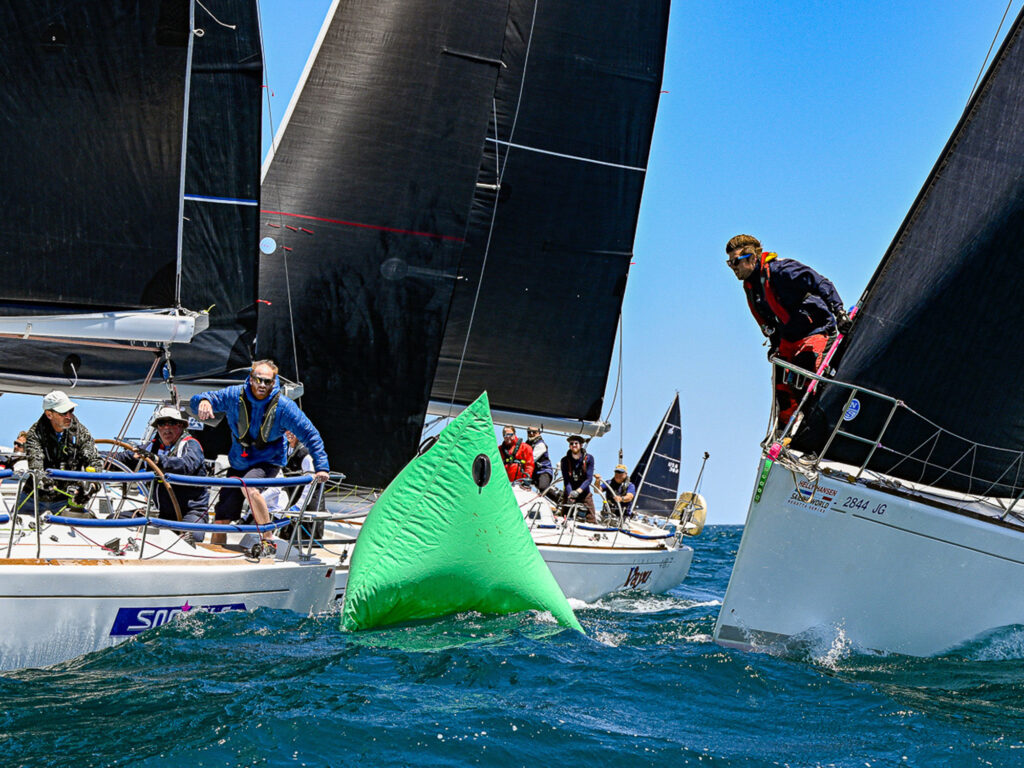
It’s not the first mistake, it’s the second,” world champion sailor Bora Gulari once said while I was coaching him in the Nacra 17 for the US Sailing team. When asked if it was OK to quote him, he said, “In fairness, I got that from Terry Hutchinson.” Regardless of the origin, I like its message—that the unexpected is inescapable, and that it’s how we manage problems that matters. That doesn’t mean being complacent, however. It means finding solutions.
When I’m sailing, I make mental notes of any adversities such as “spinnaker takedown late.” Then, once onshore, I add details into the Adversity Spreadsheet that I keep. It’s an incredibly useful tool to keep those second mistakes from happening again. I recently added an Impact column to the spreadsheet, which is a measure of how many boats were lost due to a noted adversity. This is easy to estimate sometimes, such as our flubbed takedown cost us two boats, so the impact is simply “2.” But it’s harder to estimate the impact of a bad start. Did it cost me 15 boats at the moment, or five? All I can do is make my best guess.
The Impact column also helps me identify my repeat offenders, understand which ones cost me most, and motivates me to work on improving. It’s eye-opening that, for any given regatta, even in winning, I might have an impact of 30 or more. In losing, I might see just a few things I could have done better that would have made all the difference.
This Impact column has led me to pondering the risk versus reward trade-offs of an OCS. For example, I recently sailed a regatta where I pushed the line and was OCS in one of the 10 races. But the other nine starts were excellent. It’s hard to measure, but maybe my finishes would have been five places worse per race if I’d held back. Over nine races, that’s 36 points. But the OCS cost me 60 points. Without a discard, pushing the line risking an OCS is a major error, but if there were a discard, I get to shed those 60 points, so risking the line is the right move.
The whole point of gathering all of this information into the spreadsheet is to come up with solutions. For our poor spinnaker takedown, my teammates and I concluded that there were two solutions. The first is to start the process a little earlier when we are not fighting for mark room. But when we don’t have that luxury, we came up with a process change: When we need to carry the spinnaker late, we need to put the board down and jib up very early, then strip the pole and free-fly the spinnaker. The Solutions cell in the spreadsheet can be simple and to the point, or long and in depth.
Boathandling adversity is definable and mostly in our control. Practice is usually the solution, but in the long run, I think that the best way to reduce it is to empower each team member to succeed and equally empower them to be human and, with that, make mistakes. When I see someone on another boat lay blame and even yell at their team member, I cringe. I expect an occasional boathandling error from my teammates, and they expect the same from me. In the moment, the right response is to work together to recover. Then, after the race, the spreadsheet is a low-conflict way of defining problems.
Boat-on-boat tactical adversity is often our mistake. If I am on port tack and feel strongly about wanting to get right, for example, a mistake would be to lee-bow a starboard tacker instead of taking the big duck. Most tactical errors can be solved by the tactician clearly planning and communicating. A good comms example would be: “We are going right, so if anyone comes, then we are ducking.” It reinforces planning for specific moves with an if/then.
Strategy is an interesting study in adversity mitigation. We can put solid thought into our race strategy, but in the end, Mother Nature does whatever she wants. Suppose I identify the adversity in my spreadsheet as: “I went left as local knowledge dictated, but instead a persistent righty won.”
If, in looking back, I can see no way to have predicted the right shift, I can’t count that as an error. However, the error might be that I did not mitigate the damage. The root cause would be: “I did not see the righty soon enough.” The solution could be: “We need a team member assigned to regularly to check the opposite side of the course for signs of change.”
Boatspeed adversity is the most frustrating because the root cause is often hard to identify and elusive to solve. But it is always in our control.
For adverse tactical situations over which we have little control, we switch our focus to mitigation. Suppose we identify adversity as “we were tacked on.” We might call it an error because “we tacked into too good a lane and it was inevitable we were getting tacked on.” The solution should be: “We should have tacked in a compromised lane, that way the odds of getting directly tacked on would be low.”
One easily identifiable adversity is a protest situation. Many fouls can be avoided with clear communication with competitors. Suppose the error was: “We thought it was obvious that we were clear ahead at the zone, yet someone jammed in anyway.” The root cause is: “We did not communicate that they had no room.” The solution is: “We should always start the overlap conversation 10 boatlengths out. Doing so establishes the overlap status in case of a protest situation, but more importantly, it leaves enough time for both boats to think things through and be mentally prepared to round in the proper order.”
Boatspeed adversity is the most frustrating because the root cause is often hard to identify and elusive to solve. But it is always in our control, and as such, is listed as a mistake in our spreadsheet. If the problem is: “We are slow in medium wind and chop,” and the root cause we might have to write is: “We have no idea why.” In this case, the solution is: “We need to ask some of our friends who are doing better in this condition, come up with a list of things to try, and then find medium wind and chop to train in with a tuning partner.” There is no simple solution to boatspeed woes, but to do well, we must be fast, so we must never stop working on speed.
| ADVERSITY | ERROR | IMPACT | ROOT CAUSE | SOLUTION |
|---|---|---|---|---|
| Spinnaker takedown late | Yes | 2 | I called or a takedown too late. | Start the process a little earlier when we are not fighting for mark room. But when we need to carry the spin late, we need to put the board down and jib up very early, then strip the pole and free-fly the spin. |
| OCS | Maybe | 60 | Pushing the line | Not an error if I have a discard; OK with an occasional OCS when I have a discard because I can push the line. |
| Just a bit late to the start | Maybe | 36 | Being conservative | Not an error if I have a don’t have a discard; I want to be conservative. But is an error and should push harder if I have a discard. |
| I went left as a local knowledge dictated, but instead a persistent righty won. | No | 10 | No root cause; no way I can think of even in retrospect that we could have known the right would come in. | None. We did a good job recognizing it, and we committed hard left, so when we reacted quickly, we were able to mitigate the damage. |
| I lee-bowed instead of ducked. | Yes | 5 | Boat tacked to starboard, and I was caught off guard. | Tactician continually plans for the next possible interaction: “If bow 26 tacks to starboard, duck, we want to keep going right.” |
| We were tacked on. | Yes | 4 | We tacked into too good a lane, and it was inevitable we would get tacked on. | We should have tacked in a compromised lane, that way the odds of getting directly tacked on would be low. |
| We are slow in medium wind and chop. | Yes | 20 | We have no idea why. | We need to ask some of our friends who are doing better in this condition, come up with a list of things to try, and then find medium wind and chop to train in with a tuning partner. |
An ongoing boatwork list, along with regular inspections and replacements, takes care of most mechanical adversity. But mitigation comes into play too. For example, born from things going wrong, I have added redundancy to some systems. For example, my outhaul broke once, and it’s impractical to inspect it often because it’s inside the boom, so I have added a safety line. I’ve busted my spin pole more than once, so now I carry a spare. While coaching, whenever my athlete asks, “Do you think I should replace my—” I interrupt with a “Yes!” before they can finish. It does not matter what they were about to identify, if they question whether it should be fixed or replaced, it should be. If nothing else, for peace of mind.
Managing adversity is a deeply personal mental game. For me, when something goes wrong, I take a deep breath, hold, then exhale. It probably takes only about 5 seconds for that full cycle, the amount of time my brain needs to move on. And with my breath held, I can’t possibly do something in the heat of the moment that I will regret.
I once coached an emotional team of three sailors, and we used the word “helicopter” to get the team back in focus. Anyone on the team could say it, and the agreement was that the others would each visualize being dropped into their boat from a helicopter, with no knowledge of how they got into their current position. The message was: “No blame, no bad history, just focus and hard work from where we are.”
Even in winning major events, I have never raced without plenty of adversity. Some clear mistakes, some completely out of my control, and plenty somewhere in between. I have learned to expect them, and with that, I am free to move on to managing whatever the problem might be. In the moment and with a clear head, I want to quickly come up with the best solution. Postrace, I want to identify the root cause and hopefully agree with my team on a solution. Even if I can’t identify the root cause, the solution will be to study it to find the root cause. Those that are squarely in my control, such as boathandling, I want to do everything I can to eliminate. Others, such as picking a side, are less in my control and I am only playing odds. For these, I work on mitigating their damage. But most importantly, when the inevitable problem does come our way, I want to empower my team to do the best they can to mitigate the damages and move on, avoiding that second mistake.

